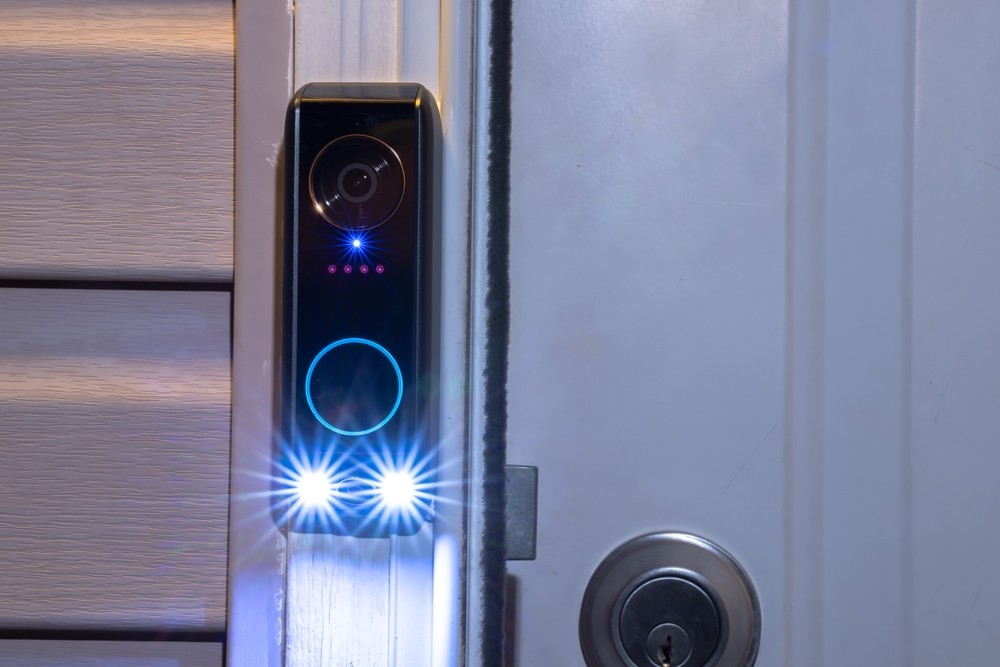Smart doorbells offer homes a blend of convenience, security, and advanced technology. These internet-connected devices have rapidly gained prominence, promising to enhance home security and enable seamless communication with visitors. Yet, as with any technological innovation, they also raise questions regarding their benefits and potential drawbacks, especially concerning privacy and data security.
Features of Smart Doorbells
Smart doorbells combine the functions of a traditional doorbell with modern technology, offering several enticing features:
- Video Surveillance: One of the most acclaimed features is the ability to see who is at your door, whether you are at home or miles away. Smart doorbells are equipped with cameras that stream live video footage to your smartphone or other devices. This feature is not only convenient but also crucial for enhancing security as it allows homeowners to visually verify their visitors.
- Two-way Audio Communication: The two-way audio feature allows users to communicate with visitors without opening the door. This is incredibly useful for managing deliveries, redirecting unwanted solicitors, or instructing visitors on where to go if the homeowner is busy or not at home.
- Motion Detection: Many smart doorbells come with motion detection capabilities. They can alert the homeowner to any movement outside the front door, providing peace of mind and an opportunity to capture suspicious activity that might otherwise go unnoticed.
- Night Vision: Nighttime security is a concern for many, and smart doorbells address this with infrared or low-light cameras. This ensures clear footage capture even in the dark, adding an additional layer of security.
- App Integration: These devices typically connect to smartphone apps, which means users can receive real-time alerts, watch live and recorded videos, and communicate with visitors. Integration with other smart home devices, like smart locks and hubs, can streamline home security systems.
- Cloud Storage: Footage recorded by smart doorbells is often stored in the cloud, allowing users to access videos from anywhere. This feature is handy for reviewing past events and sharing important footage with law enforcement, if necessary.
Security Concerns
While the features of smart doorbells present numerous advantages, they also come with potential security risks that users should be aware of:
- Device Hacking: Like any internet-connected device, smart doorbells can be vulnerable to hacking. If not properly secured, hackers could gain access to the video feeds or even take control of the device. This risk makes it critical for users to ensure that their devices are protected with strong, unique passwords and updated firmware.
- Network Vulnerability: A compromised smart doorbell can expose the home network to further attacks, potentially affecting other connected devices. To mitigate this risk, users should consider creating a separate network for smart home devices.
- User Authentication: Weak or absent authentication protocols can leave smart doorbells vulnerable. Two-factor authentication (2FA) should be enabled to provide an additional layer of security when accessing the device remotely.
- Data Transmission Security: Since recorded footage is often transferred to cloud storage, it’s imperative that the transfer channels are encrypted. Users should make sure their doorbell brand utilizes secure encryption standards.
Privacy Concerns
Privacy is another critical issue surrounding the use of smart doorbells. These concerns stem primarily from the nature of the data collected and how it’s used or shared:
- Continuous Surveillance: Continuous recording raises ethical questions about surveillance, especially concerning visitors who may be unaware that they’re being recorded. It is crucial for users to comply with local privacy laws and inform visitors of the presence of surveillance equipment.
- Data Storage: The storage of video footage in the cloud raises questions regarding who can access this data and for how long. Users should be aware of their service provider’s data storage policies and opt for systems that offer control over data storage and access.
- Third-party Access: Some users are concerned about data being accessed by the doorbell companies for advertising or analytics. Reading and understanding the privacy policy of a company before purchasing a smart doorbell can provide clarity on how data is handled.
- Location Tracking: The use of smartphone apps to control smart doorbells may inadvertently share users’ location data with service providers. Reviewing app permissions can help minimize unnecessary data sharing.
Balancing Benefits and Concerns
The potential benefits offered by smart doorbells can be substantial. They provide a sense of security and peace of mind while also adding convenience to everyday life. However, maximizing these benefits while mitigating risks requires a considered approach:
- Research and Selection: Choosing a reputable manufacturer with a strong emphasis on security and privacy is essential. Reviews, testimonials, and independent security evaluations can provide insights into how reliable and secure a product truly is.
- Implementing Best Practices: Adopting best security practices, such as regular firmware updates, strong passwords, enabled two-factor authentication, and separate networks for smart devices, can significantly reduce vulnerabilities.
- Policy Awareness: Stay informed about data protection laws and regulations to ensure compliance. This may involve placing visible signage about surveillance and checking local guidelines about recording consent.
- Privacy Settings Management: Regularly review and configure privacy settings on both the device and its associated app to control what data is collected and shared. Customizing settings to anonymize or delete unnecessary data can enhance privacy.
In the end, smart doorbells have the potential to transform home security by providing advanced monitoring and communication capabilities. However, users must actively engage with the features, security settings, and privacy policies offered by these devices to ensure their effectiveness and safety. By weighing their comprehensive advantages against the potential drawbacks, homeowners can make an informed decision about whether smart doorbells align with their security and privacy priorities.



